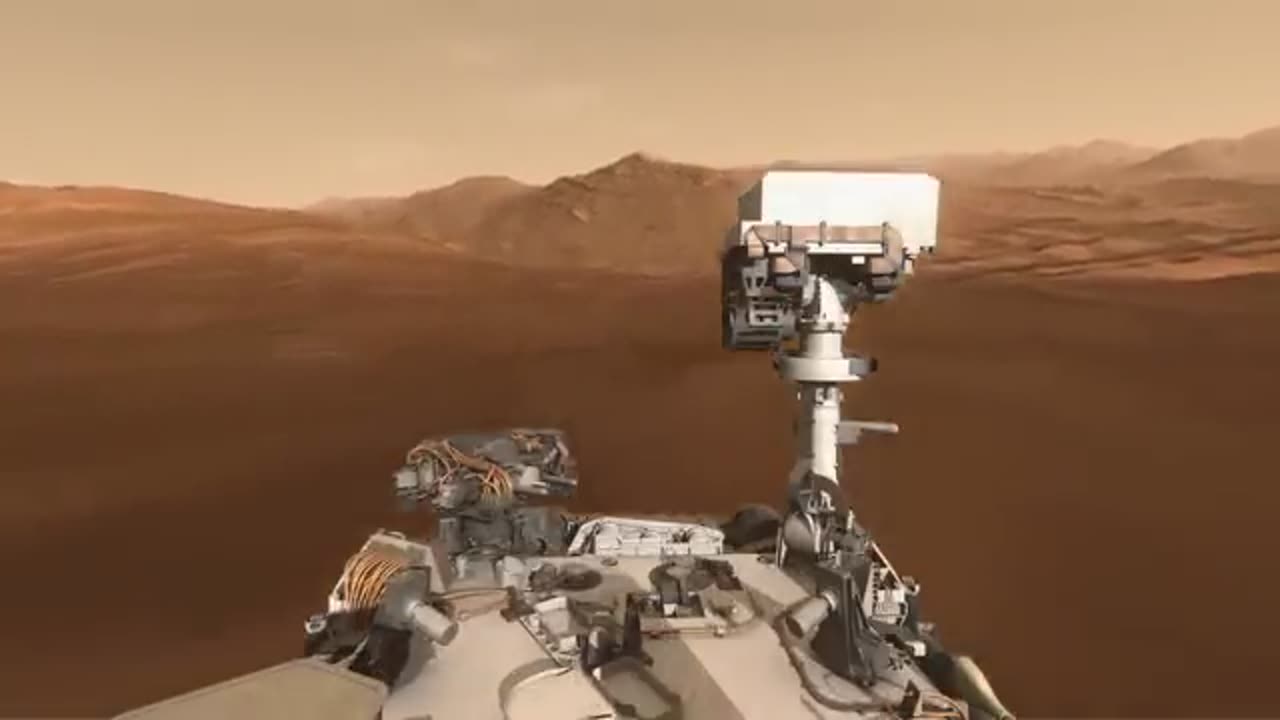Premium Only Content

Mars Science Laboratory Curiosity Rover Animation
1. Mars Basics:
Mars is the fourth planet from the Sun in our solar system. It is often called the "Red Planet" due to its reddish appearance, which is caused by iron oxide (rust) on its surface. Mars is a terrestrial planet with a thin atmosphere, and it has surface features reminiscent of both Earth and the Moon.
2. Size and Composition:
Mars has a diameter of about 6,779 kilometers (4,212 miles), making it roughly half the size of Earth. Its gravity is only about 38% of Earth's gravity. Mars has a solid, rocky surface with various types of terrain, including vast plains, towering volcanoes, deep canyons, and polar ice caps.
3. Atmosphere:
Mars has a thin atmosphere composed mostly of carbon dioxide (about 95.3%), with traces of nitrogen and argon. The thin atmosphere contributes to the planet's cold temperatures and low air pressure, making it inhospitable to human life without specialized equipment.
4. Water and Potential Habitability:
Evidence suggests that Mars was once much wetter and had liquid water on its surface in the distant past. There are ancient river valleys, lake beds, and deltas that indicate the presence of liquid water. Today, water primarily exists in the form of ice at the polar ice caps and as subsurface ice.
The search for signs of past or present life on Mars is a major focus of exploration. While the harsh conditions on the surface make life challenging, some extremophiles (organisms that can survive in extreme environments) on Earth provide insights into the possibility of life on Mars.
5. Moons:
Mars has two small moons, Phobos and Deimos. These moons are irregularly shaped and are thought to be captured asteroids or objects from the Kuiper Belt. They are much smaller than Earth's Moon and have unique orbits around Mars.
6. Exploration:
Numerous spacecraft have been sent to explore Mars, including rovers, landers, and orbiters. Notable missions include the Viking program, the Mars rovers Spirit and Opportunity, the Mars Science Laboratory Curiosity Rover, and more recently, the Perseverance Rover, which landed on Mars in February 2021 with the goal of seeking signs of past microbial life and collecting samples for future return missions.
7. Future Exploration:
NASA and other space agencies have plans for further exploration of Mars. This includes continued rover missions, sample return missions, and the potential for crewed missions in the future, with the goal of better understanding the planet's history, geology, and potential for habitability.
These are just some key details about Mars. The ongoing exploration of the planet continues to reveal new insights into its history and potential significance in the search for life beyond Earth.
-
 5:55:01
5:55:01
Akademiks
7 hours agoYoung Thug Dissing YFN Lucci. Ready to Go back to Jail. Offset vs Cardi b
57.9K4 -
 7:07
7:07
Colion Noir
15 hours agoCalifornia Just Banned All Glocks
47.6K40 -

Adam Does Movies
8 hours ago $1.17 earnedTalking Movies + Ask Me Anything - LIVE
39K1 -
 1:23:56
1:23:56
Jamie Kennedy
6 hours agoChoosing Good in a World Gone Dark | Ep 223 HTBITY with Jamie Kennedy
33.9K6 -
 6:54:11
6:54:11
SpartakusLIVE
9 hours ago#1 Challenge CHAMPION of WZ || Ridin' The GRAVY Train w/ GloryJean
73.4K1 -

The Pascal Show
5 hours ago $1.21 earnedDISTURBING UPDATES! New Developments In The D4vd Celeste Case... Possible Celeste Sighting?!
29.1K2 -
 2:03:18
2:03:18
The Charlie Kirk Show
7 hours agoTPUSA Presents This is The Turning Point Tour LIVE with Megyn Kelly and Governor Glenn Youngkin!!
236K67 -
 1:37:35
1:37:35
Badlands Media
23 hours agoAltered State S3 Ep. 47: Epstein, DOJ Whistleblowers, and Trump’s Tightrope
51.2K5 -
 5:18:07
5:18:07
putther
6 hours ago $1.09 earned⭐ F160 Raiju Jet Hunting on GTA Online Ft. GTA 5 RP ❗
33.4K3 -
 58:58
58:58
MattMorseTV
7 hours ago $7.41 earned🔴This NEW INFO changes EVERYTHING.🔴
33.3K54